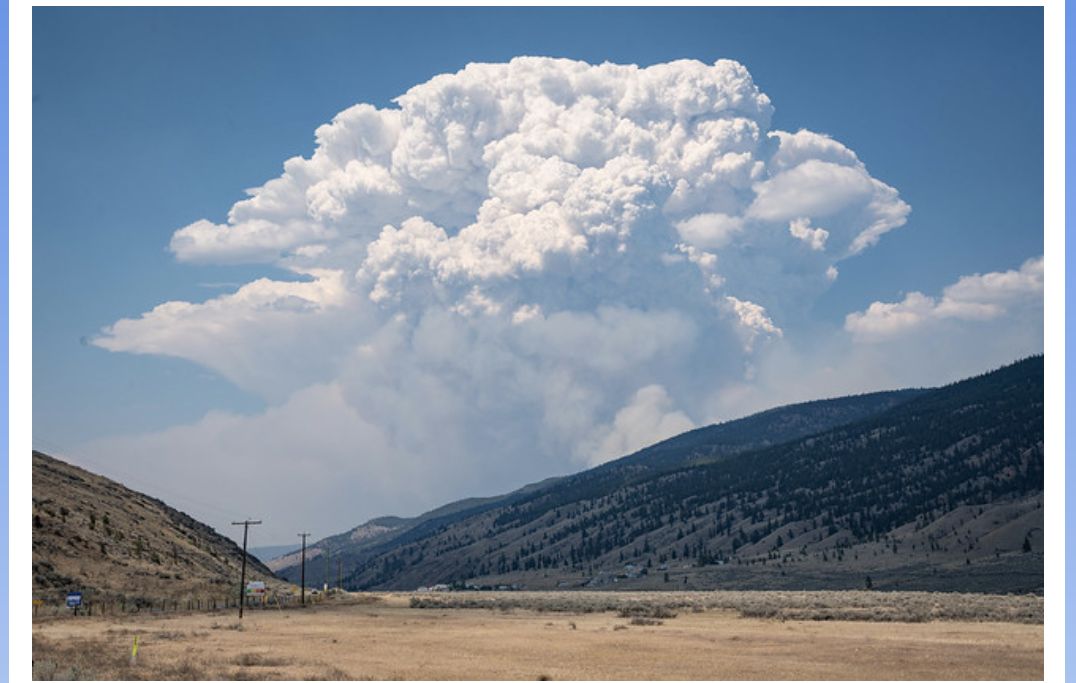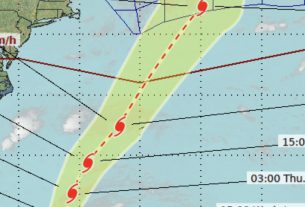**** Info via Environment Canada
Pyrocumulonimbus clouds
What on earth is a “pyrocumulonimbus” cloud? While a mouthful to say, it is simply an explosive, heat-generated storm cloud. They are formed similarly to cumulonimbus clouds, but the intense heat comes from large wildfires or volcanic eruptions.
Pyrocumulonimbus clouds, or pyroCbs for short, also known as cumulonimbus flammagenitus, can grow to great heights – and can be associated with all of the same features of thunderstorms. Lightning, rain, gusty winds, and even hail and fire-generated tornadoes can occur with them.
Pyrocumulonimbus clouds from the Sparks Lake fire, Northwest of Savona, British Columbia, June 30, 2021. Credit: Kyle Brittain.
How they form
The smoke from wildfires acts as a buoyant plume of heat rising through the atmosphere. Water vapour condenses onto the fine ash forming grey or brown clouds as the smoke rises and cools. These clouds behave like other thunderstorm clouds with drafts and downdraughts, and when matured, there may be a downburst of intense localized rain with wind, lightning, and possibly even hail and tornadoes. The updrafts and downdraughts of these thunderstorms can carry embers from the fire. With intense lightning, pyroCBs can further spread wildfires. These colossal clouds can then often take on the characteristic “anvil” shape as the cloud spreads along the top of the troposphere.
Pyrocumulonimbus clouds from the Sparks Lake fire, Northwest of Savona, British Columbia, June 29, 2021. Credit: Kyle Brittain.
Like volcanic eruptions, pyroCbs can force smoke to such great heights that it can penetrate the stratosphere, where it can remain for months. Researchers suggest pyroCBs happen more often than thought and they are responsible for a huge volume of pollutants trapped in the upper atmosphere.
Record number of pyroCb events in 2023
According to the US Naval Research Laboratory, Canada has seen 110 pyroCb events (out of 133 events globally) as of July 21 – the highest seen since monitoring for them began in 2013. This surpasses the previous record set in 2021, with 50 occurring in Canada and 100 occurring globally – a testament to how many intense wildfires have been occurring across the country during the unprecedented 2023 wildfire season.
The McKay Creek fire, in British Columbia, on June 30, 2021. The natural-color image was overlaid with shortwave-infrared light to highlight the active fire. Credit: NASA Earth Observatory.




